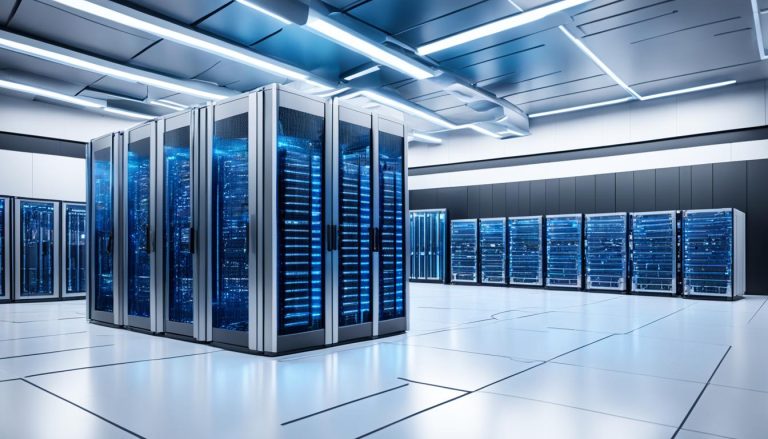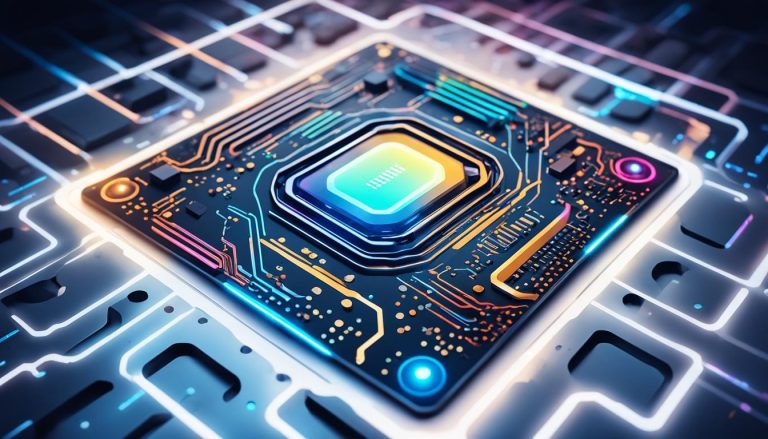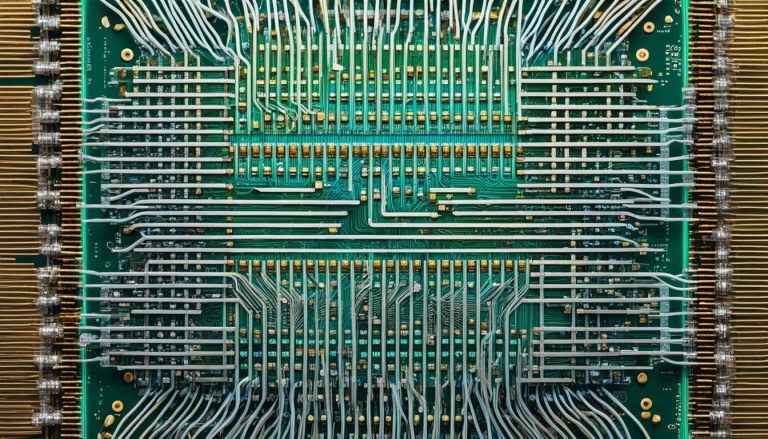Artificial intelligence (AI) and neural networks are revolutionizing industries, but their energy consumption can be a concern. However, there are strategies to maximize power efficiency in AI and neural network systems, reducing energy consumption while maintaining performance.
Quantization is a powerful technique for reducing energy consumption in AI training. By converting input values into a smaller set, computational efficiency is increased, and energy consumption is lowered. Proper implementation of quantization ensures accuracy and performance.
Sparsity is another approach to lower energy consumption in machine learning. By using only necessary parameters and avoiding over-parameterization, computation, memory, and bandwidth requirements are reduced. Parameter optimization plays a vital role in optimizing sparsity and achieving significant energy savings.
Power capping limits processor power consumption, resulting in energy savings without compromising efficiency. Additionally, carbon-aware power capping considers the carbon intensity of current generation sources, reducing the carbon footprint of training while maintaining energy efficiency.
Power efficiency is crucial in minimizing energy consumption and carbon emissions in AI systems. Techniques like quantization, sparsity, power capping, and carbon-aware power capping enhance power efficiency while ensuring optimal performance. By prioritizing power efficiency, we can achieve sustainable and efficient AI systems in various industries.
Key Takeaways:
- Quantization is a technique that reduces energy consumption in AI training by converting input values into a smaller set.
- Sparsity reduces energy consumption in machine learning by using only necessary parameters and optimizing parameter optimization.
- Power capping limits processor power consumption, resulting in energy savings during AI activities.
- Carbon-aware power capping considers the carbon intensity of generation sources, reducing the carbon footprint of AI training.
- Prioritizing power efficiency in AI systems ensures sustainability and optimal operation.
Quantization for Power Efficiency
Quantization is a powerful technique that plays a crucial role in maximizing power efficiency during AI training. By converting input values into a smaller set of values, quantization reduces the computational load and energy consumption required for AI models. This is achieved by utilizing lower-precision arithmetic operations instead of the traditional 32-bit floating point numbers.
Implementing quantization offers several benefits for power efficiency in AI training:
- Increased computational efficiency: With quantization, the reduced precision of calculations allows for faster processing, resulting in improved computational efficiency.
- Reduced memory and bandwidth requirements: Lower-precision values require less storage space and result in reduced memory and bandwidth usage, further enhancing power efficiency.
- Lowered energy consumption: By reducing computational complexity and memory requirements, quantization significantly lowers the energy consumption associated with AI training.
However, it’s essential to ensure the accurate implementation of quantization techniques to maintain the accuracy and performance of AI models. Approaches like relaxed quantization and straight-through estimator help address the challenges surrounding quantization and achieve stable and efficient training processes. These techniques optimize the trade-off between precision and power efficiency, enabling AI systems to achieve high performance while minimizing energy consumption.
Quantization offers a powerful solution to enhance power efficiency in AI training processes. By leveraging the benefits of reduced computational requirements, improved memory utilization, and decreased energy consumption, it plays a significant role in driving sustainable and resource-efficient AI systems.
| Benefits of Quantization for Power Efficiency in AI Training |
|---|
| Increased computational efficiency |
| Reduced memory and bandwidth requirements |
| Lowered energy consumption |
Sparsity for Energy Reduction
Sparsity is a powerful technique in machine learning for reducing energy consumption and optimizing the efficiency of AI training models. By selectively using only the necessary parameters and avoiding over-parameterization, sparsity reduces the computational, memory, and bandwidth requirements of machine learning algorithms.
One of the key advantages of sparsity is its ability to significantly lower energy consumption in machine learning. By eliminating unnecessary computation and memory usage, sparsity reduces the overall power requirements of AI training processes, leading to energy savings.
Parameter optimization, also known as hyperparameter tuning, plays a crucial role in maximizing the benefits of sparsity. By fine-tuning the model’s parameters, machine learning practitioners can optimize sparsity and achieve substantial energy reduction during the training of ML models.
Furthermore, sparsity enables the implementation of more complex models while maintaining energy efficiency. By focusing computational resources on relevant and impactful parameters, sparsity allows for the creation of powerful machine learning models that deliver accurate results while minimizing energy consumption.
Benefits of Sparsity in Machine Learning:
- Promotes energy reduction in AI training models
- Optimizes computational efficiency
- Reduces memory and bandwidth requirements
- Enables the implementation of more complex models
Implementing sparsity in machine learning not only leads to energy reduction but also contributes to the overall sustainability and environmental impact of AI systems. By prioritizing power efficiency through techniques like sparsity, we can ensure the responsible and efficient use of energy resources in the development and deployment of AI applications.
Sparsity Example:
“Sparsity has allowed us to reduce the energy consumption of our AI training models by up to 40%. By selectively activating only the most important parameters, we have achieved significant energy savings without compromising performance or accuracy.”
Power Capping and Carbon-Aware Power Capping
Power capping is a valuable technique in maximizing power efficiency and achieving energy savings in AI and ML systems. By setting a maximum power level that a processor can consume, power capping limits the energy consumption during AI and ML training activities. While this may result in slightly longer training times, the overall energy efficiency is significantly improved.
On the other hand, carbon-aware power capping takes power efficiency to the next level by considering the carbon intensity of the current generation sources. In the era of increasing focus on sustainability and environmental consciousness, carbon-aware power capping plays a crucial role in reducing the carbon footprint of AI and ML training processes.
By strategically factoring in the availability of renewable energy and the mix of renewable and non-renewable generation sources, carbon-aware power capping ensures that power consumption is optimized based on the carbon emissions associated with different energy sources. This approach not only delivers energy savings but also contributes to reducing the environmental impact of AI and ML operations.
Benefits of Power Capping and Carbon-Aware Power Capping
The benefits of power capping and carbon-aware power capping include:
- Energy savings: Power capping enables AI and ML training activities to be completed efficiently while minimizing power consumption, resulting in significant energy savings.
- Optimized operation: By setting power limits, power capping ensures that AI and ML systems operate within sustainable power levels, preventing unnecessary energy consumption.
- Reduced carbon footprint: Carbon-aware power capping goes a step further by considering the carbon intensity of energy sources, leading to reduced carbon emissions during AI and ML training processes.
- Sustainability: Implementing power capping and carbon-aware power capping aligns AI and ML systems with sustainable practices, contributing to a greener future.
“Power capping and carbon-aware power capping techniques offer a strategic approach to maximizing power efficiency and achieving energy savings while considering the environmental impact of AI and ML systems.”
Integrating power capping and carbon-aware power capping into AI and ML infrastructure requires careful implementation and optimization. By leveraging the capabilities of hardware and software technologies, organizations can embrace power efficiency while maintaining the performance and accuracy of AI models. Power capping and carbon-aware power capping represent significant steps toward achieving energy-efficient and sustainable AI and neural network systems.

Conclusion
Power efficiency is crucial in AI systems and neural networks to minimize energy consumption and reduce carbon emissions. By implementing techniques such as quantization, sparsity, power capping, and carbon-aware power capping, it is possible to significantly enhance power efficiency while maintaining performance.
Proper implementation and optimization of these techniques can lead to substantial energy savings during AI training and inference activities. Prioritizing power efficiency in AI systems enables optimized operation and sustainability, allowing us to leverage the benefits of artificial intelligence and neural networks across various applications and industries.
By investing in power efficiency, we can achieve a balance between technological advancement and environmental responsibility. Reducing energy consumption not only helps to lower costs but also contributes to a greener and more sustainable future. As AI systems continue to evolve, it is essential to prioritize power efficiency to ensure the long-term viability of these technologies.
FAQ
How can power efficiency be maximized in AI and neural network systems?
Power efficiency in AI and neural network systems can be maximized by implementing techniques such as quantization, sparsity, power capping, and carbon-aware power capping. These techniques reduce computational requirements and energy consumption while maintaining system performance.
What is quantization and how does it contribute to power efficiency?
Quantization involves converting input values into a smaller set of values, such as using lower-precision arithmetic operations. This technique significantly increases computational efficiency, reduces memory and bandwidth requirements, and lowers energy consumption in AI training.
What is sparsity and how does it help in reducing energy consumption?
Sparsity is an approach that reduces the complexity of AI training models by using only the necessary parameters and avoiding over-parameterization. By reducing computation, memory, and bandwidth requirements, sparsity significantly lowers energy consumption in machine learning.
How does power capping contribute to energy savings in AI and ML training activities?
Power capping involves setting a maximum power level that a processor can consume, resulting in energy savings. Even if it takes slightly longer, AI and ML training activities can still be completed efficiently within the capped power consumption.
What is carbon-aware power capping and how does it further reduce the carbon footprint of AI training?
Carbon-aware power capping takes into account the carbon intensity of the current generation sources. By considering the availability of renewable energy and the mix of renewable and non-renewable sources, carbon-aware power capping further reduces the carbon footprint of AI training while maintaining energy efficiency.
Why is power efficiency important in AI and neural network systems?
Power efficiency is essential to minimize energy consumption and reduce carbon emissions in AI and neural network systems. By implementing techniques like quantization, sparsity, power capping, and carbon-aware power capping, optimized operation and sustainability can be achieved while leveraging the benefits of artificial intelligence and neural networks in various applications and industries.



















